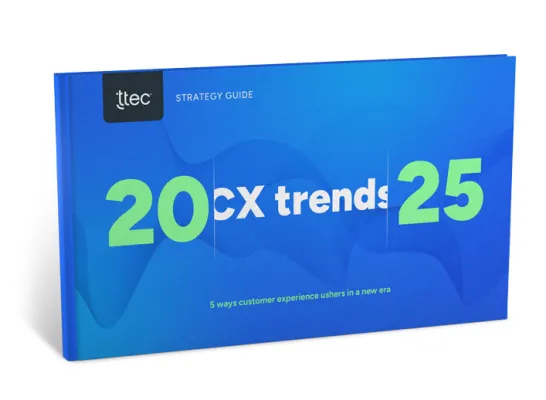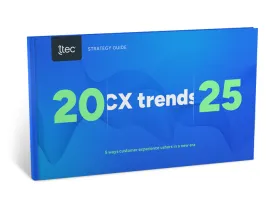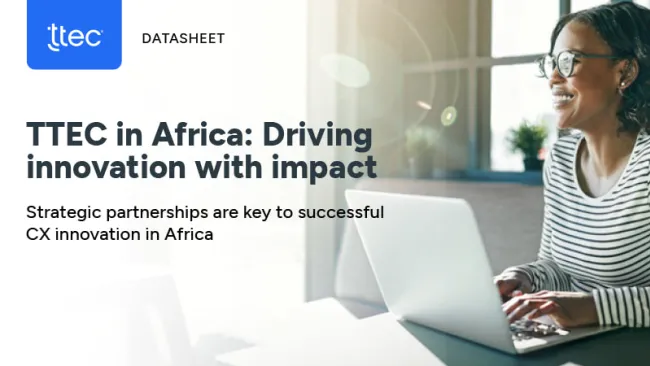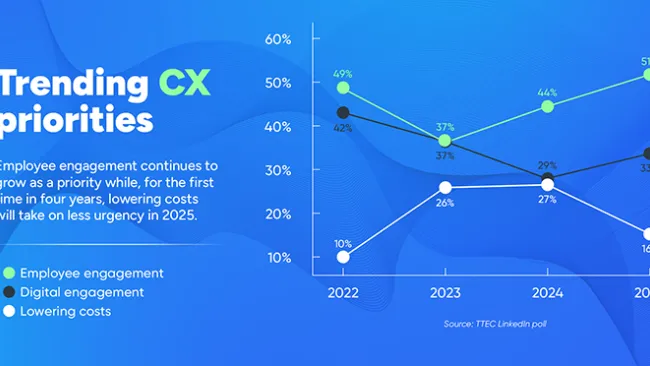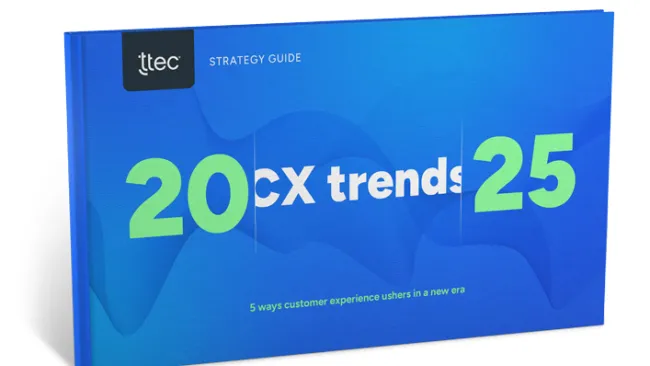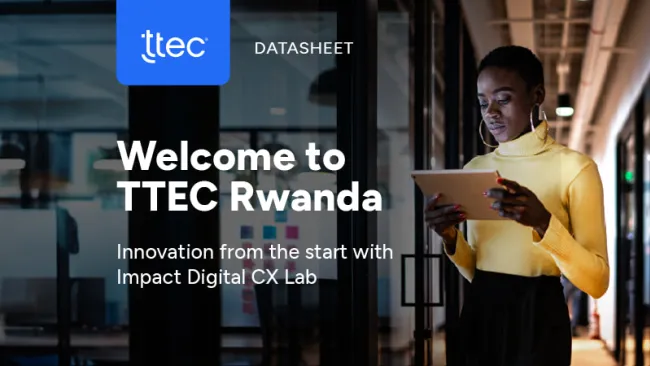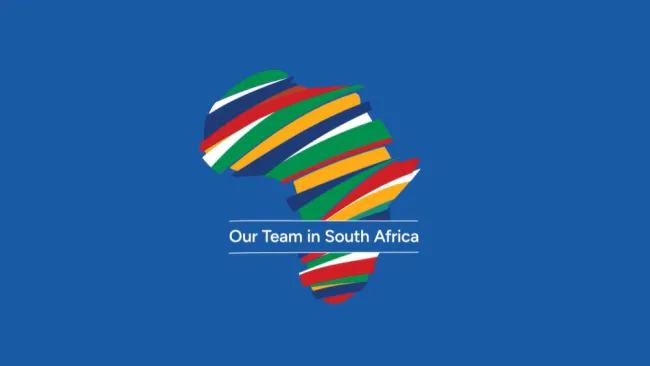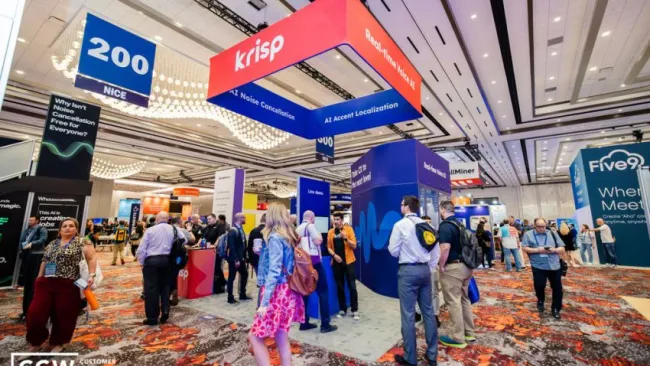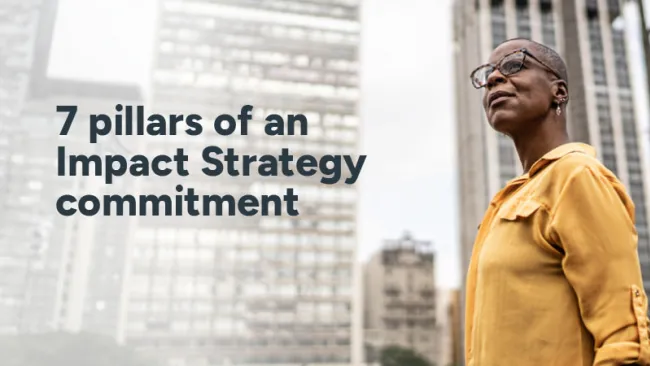It’s increasingly undeniable that brands must be purpose-driven if they’re going to thrive in this competitive landscape. It’s no longer enough just to sell great products or services - customers want to support brands they trust to do the right thing and employees want to work for companies that share their values.
Brands that focus on how they run their business – how they treat employees, where they source products, their environmental impacts, and how they exhibit their social conscience – are gaining a competitive advantage when it comes to winning and retaining top talent and growing customer loyalty. And beyond those bottom-line benefits, a purpose-driven approach is just the right thing to do.
As employees and customers embrace sustainability more and more, impact sourcing has become increasingly popular among companies looking to make a difference. It’s a great place to begin but, if brands want to spur lasting change and improvements, impact sourcing needs to be part of a broader impact strategy.
It’s important to understand the differences between impact sourcing vs. impact strategy, and how the two are interconnected.
Make hiring meaningful with impact sourcing
Impact sourcing is a business practice by which companies hire and provide career development opportunities to individuals from marginalized communities.
Through impact sourcing, brands provide employment opportunities to individuals who may not have access to traditional employment opportunities. Target populations include people who are: impoverished, an ethnic or religious minority, LGBTQ+, disabled, veterans, elderly, refugees, single parents, and others.
Impact sourcing benefits companies and communities alike. It empowers companies to make a social impact, creating jobs for historically underserved populations. It also promotes skills development and career development opportunities that benefit individuals and communities over the long term.
By embracing impact sourcing, employers can benefit from the unique talents of a previously untapped workforce while maintaining high-quality service standards and uncovering cost savings.
Go deeper with an impact strategy
Impact sourcing shouldn’t be a standalone effort; it needs to be part of a larger plan. This is where the distinction between impact sourcing vs. impact strategy comes into play.
Impact strategy goes well beyond impact sourcing; it dives deeper than just the hiring process. Impact strategy is guided by the notion that economic vibrancy can help ameliorate socioeconomic and environmental problems – and that brands have a responsibility to contribute to that economic vibrancy, to be part of the solution.
At TTEC, our impact strategy is built on seven pillars and is a truly differentiated approach that aims to make more meaningful impacts, with lasting outcomes, in the communities where customers and employees live.
In addition to impact sourcing, our impact strategy focuses on other things, such as:
- Bringing work to where people live and shortening commutes when possible
- Working with education entities to design and deliver curriculum that open more opportunities and create pathways to employment
- Taking marginalized populations into consideration during procurement processes and vendor selection
- Hiring with sustainability in mind: proper employment contracts, meaningful and competitive pay, employment benefits, and being deliberate about workers’ development paths
An impact strategy also encompasses two other crucial components: measurement and continued investment. For an impact strategy to succeed, brands must determine what success will look like and derive a set of quantifiable and shared long-term measures to gauge progress. Brands should hold themselves accountable, reporting to stakeholders on their progress and overall social return on investment.
It’s also important to understand from the outset that investments in impact strategy will be ongoing. Impact strategy is a continually evolving endeavor, and brands must keep exploring new ways to unlock new investments that can amplify their impact.
Impact strategy in action
At TTEC, impact strategy isn’t just something we help our clients achieve, it’s something we ourselves prioritize.
We’ve long invested in communities. More than 20 years ago, TTEC was one of the first business process outsourcing (BPO) companies to enter the Philippines, and we’ve since invested in 19 sites, 23,000 employees, and significant local impacts in that region.
Late last year, we launched a new corporate initiative to go beyond those efforts. We built an Impact Practice and designed and built a partner infrastructure, operations and delivery model, and measurement framework to guide our impact work.
We’re focusing this work first in South Africa and Rwanda, where we’ve cultivated deep relationships with the local and federal governments and other strategic partners. Together, we’ve identified communities where we can make significant impacts with and for our clients.
We plan to keep adding more locations, growing our impact footprint, and working to achieve our clients' (and our own) purpose-driven goals.
Learn more about our impact strategy, the nuances of impact sourcing vs. impact strategy, and how we can help your brand make an impact here.

